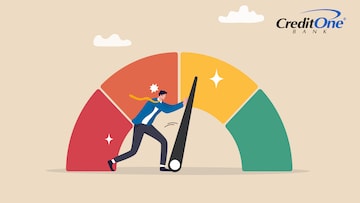Many people regard credit scores as an indicator of overall financial health, but lenders primarily view them as a measure of creditworthiness. Credit scores are an extremely useful tool lenders employ to decide if they should offer someone credit and at what interest rate. But how exactly are those three little numbers on your credit report calculated? There are several key factors nearly all credit bureaus look at to determine your credit score, which is presented as a FICO® Score or VantageScore®. By understanding the different components of your score and how they are weighted, you can take control of your credit score today.
1. Repayment History
Counted as 35% of your score, your repayment history has the greatest impact on your credit score. Do you consistently pay bills and balances on your credit accounts by the due date every month? Demonstrating good repayment habits over a long period of time tells creditors that you’re likely to repay new debts on time, as well. While one late payment won’t ding your credit score too much, more than a couple can lower the number significantly. It is important to know exactly when your monthly bills are due and pay the entire balance, or at least the minimum amount, to improve your score.
2. Credit Utilization and Debt
The second most important ingredient in your credit score, comprising 30% of the final number, is your ratio of utilized credit to available credit. According to myFICO™, credit bureaus collect data on how much debt you have across revolving and installment credit accounts to gauge your financial stability. For example, an individual with a $4,000 balance on a $20,000 limit credit card will generally have a higher credit score than someone owing $4,000 on an account with a $5,000 limit. If you are close to maxing out all of your credit accounts, lenders may see you as financially overextended and therefore a high-risk borrower.
3. Average Age of Credit
The average age of your open lines of credit (including mortgages, student loans, and auto loans) accounts for 15% of your credit score. The longer your available credit history is – provided your track record is a responsible one – the more likely lenders are to view you as financially trustworthy over the long-term. Young adults who are just starting to establish credit may initially have lower scores due to insufficient credit history, but patience and discipline in managing credit will boost scores over time.
4. Requests for New Credit
Opening a credit card is a great way to help build your credit score, but applying for too many cards too quickly can negatively affect your credit score. Formally applying for new credit or a loan is called a "hard inquiry," and too many hard inquiries in a short amount of time can lead lenders to think you are desperate to access funds. They may deem you to be a risky borrower who doesn’t have the wherewithal to repay an expanded debt load. (It's important to note, however, as Credit.com points out, a soft inquiry on your credit report usually won't impact your score.)
5. Assortment of Credit
Your "mix" of credit constitutes the final 10% of your score. Creditors view managing a variety of debts and credit accounts as a mark of responsibility. Thus, consumers who have several credit cards, a mortgage, and other loans on which they pay the monthly balance will typically have a stronger score that someone who has only one or two active credit cards.
Understanding what goes into your credit score is the first step to maintaining a healthy one. That's why we offer free credit score monitoring, so you will always know where you are on your financial journey.



